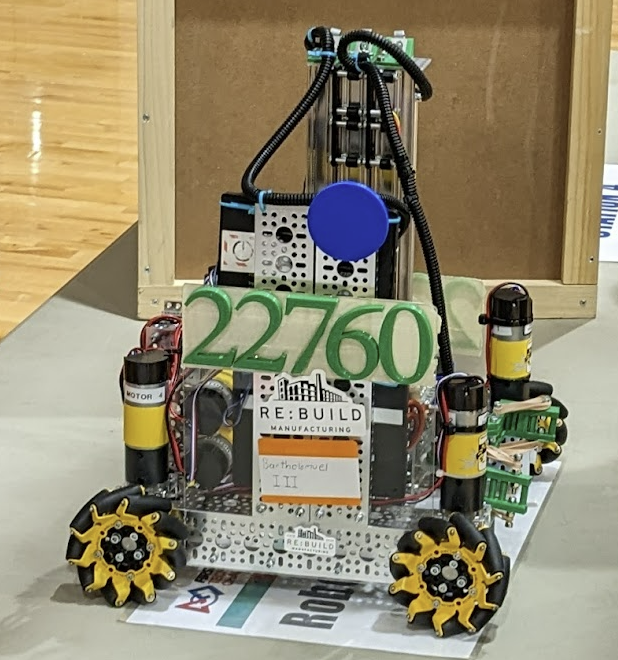Hollis, New Hampshire – Last school year, Re:Build Manufacturing made a generous donation to support the robotics team at the Hollis Brookline Middle School, located in Hollis, New Hampshire, where I mentor science, technology, engineering, and math (STEM) students. My daughter and twelve other students at the school registered for the For Inspiration and Recognition of Science and Technology (FIRST) robotics team and the FIRST Tech Challenge (FTC). Competing as team number 22760, it was the rookie year for the Navy Knights, and the season was incredibly fun, exciting, and rewarding for all thirty FTC participants.
FIRST New Hampshire is a nonprofit robotics competition whose goal is to promote STEM education and inspire young people to pursue careers in these fields. It was started in my home state of New Hampshire by Dean Kamen, a renowned entrepreneur and tireless advocate of science and technology. Over the last thirty years, FIRST has become one of the leading organizations promoting STEM around the world. FIRST is present in 110 countries and has more than 100,000 students participating yearly in competitions.
Each year, the students design a robot to compete in a unique challenge that offers a myriad of ways for a team to score points, including engaging the robot to manipulate one or more objects on a field. However, the experience is more than a ruthless endeavor to score points. At each match, each team is paired with another robot team to form an alliance, and that alliance decides the winner of the match. This model encourages collaboration between alliance partners to strategize a plan for the match and determine the best way for each robot to complement the other’s capabilities and strengths.
FTC robots must fit in an eighteen-inch cubic volume at the start of the match, and play occurs on a 12 by 12-foot field. In the first thirty seconds of play, the robots are controlled autonomously, driven by a software program and in response to sensor feedback. In the next two minutes, robots are controlled by human drivers. The task for this season was to grab cones and place them on top of poles of varying heights scattered throughout the field. An animated description of the challenge can be found here: https://tinyurl.com/4y729m7t.

At the start of the season, the seventh-grade team knew very little about coding, computer-aided design (CAD), and robotic components and sensors. The early months were overwhelming, as there were several steep learning curves. The team divided into small groups to focus on and specialize in the many skills needed to build a robot. After much effort, the team managed to build its first functional robot.
In the first several months of the season, teams were invited to compete in three scrimmages and then learn from that experience and those of other the teams. With each competition, the team made great strides in performance and reliability. By the time of the regional qualifiers, the team was ready and could confidently explain to the judges in detail how the robot worked. They excitedly waited for their turn to compete, planning strategies as they watched other matches. When they took the field, the drivers worked with their alliance partners to successfully complete the tasks. At the end of the day, the team placed high enough to advance to the state tournament, and at the state level, the team competed in the championship round. It was wonderful to see the students so excited by STEM and robotics. The 2022-2023 season was a great experience for the students and their mentors. We are now beginning to consider the challenge announced for the 2023-2024 season.